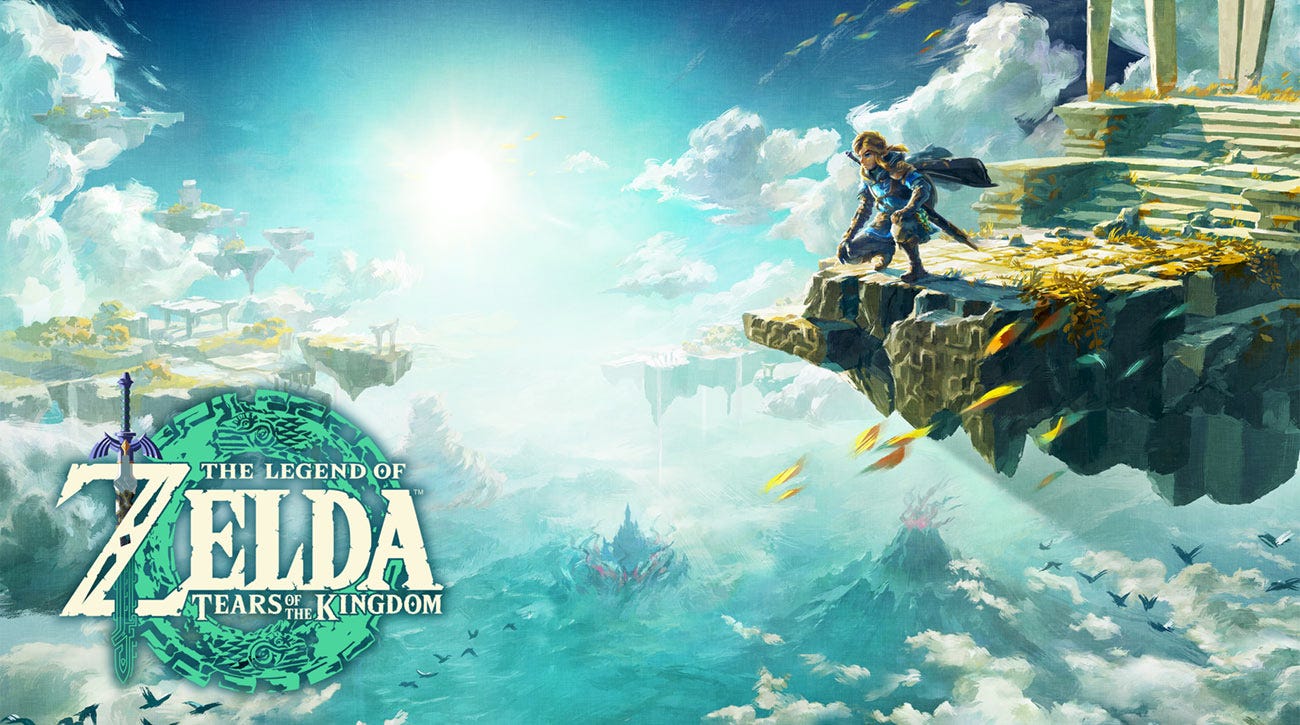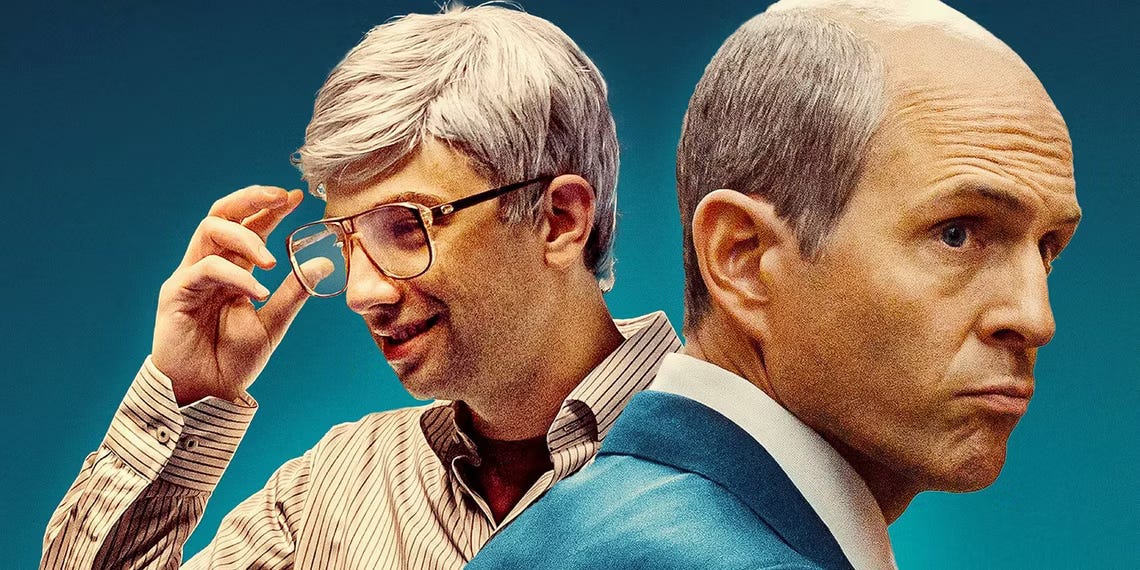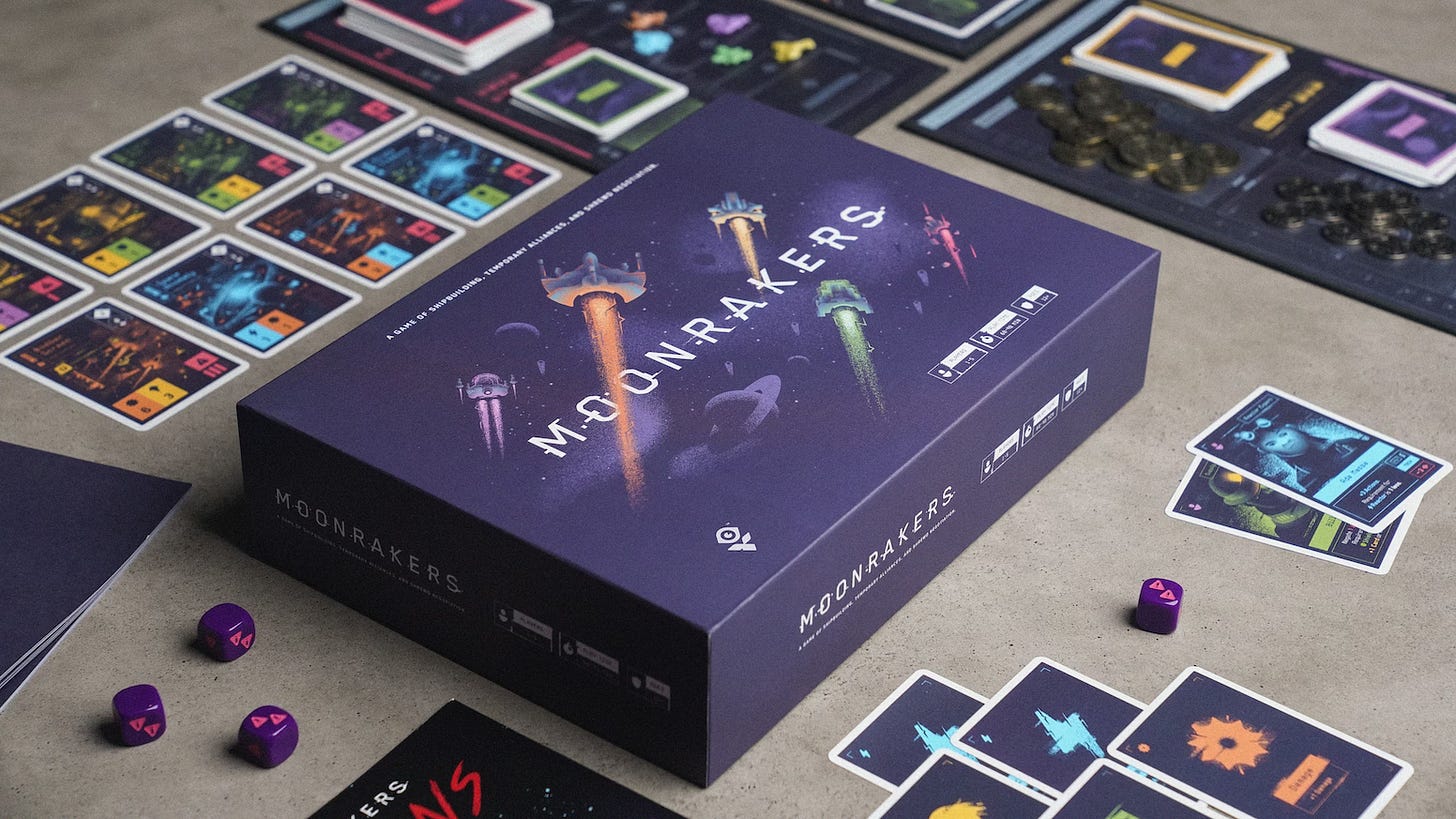How Nintendo Did It
Plus: RIP in peace BlackBerry and bartering in space
Welcome to Smash Cuts
Welcome to Smash Cuts, a semi-regular and semi-thoughtful curation of links and endorsements presented along with some original writing. Each post will largely be a rundown of something to read, a movie to watch, and a board game to play. There will be no theme or consistency. The plan is to post bi-weekly but we’ll see how it goes. Please subscribe! It’s free and I promise you will get your money’s worth.
1) How Nintendo did it
I love learning just enough about a subject to understand a puzzle and then kind of understand the solution. Like reading about an advanced math mystery without knowing a thing about advanced math. So my hubris was tweaked by stories and TikToks about game developers - devs - mystified at how Nintendo created the new Zelda game Tears of the Kingdom. I got the gist: TOTK introduces advanced, computationally-taxing powers like forging scores of items together and reversing time. These elements must work not just alone but in combination. This would be a major feat on current-gen hardware but Nintendo pulled it off on a six-year-old system that was underpowered on release. And the game looks and runs better than its ambitious predecessor Breath of the Wild.
It seems inconceivable. As one dev put it, “it just shouldn’t be possible to do these things.”
Now independent devs and programmers are cutting through TOTK’s code with machetes to search for answers. One of them happens to be my friend Sam. I asked Sam to speak to me as he might a young child, or a golden retreiver, on what they’ve found. Sam’s quotes, which have been edited for brevity, appear in the blocks.
“Nintendo, a multinational corporation, is using Unix freeware.”
The Nintendo Switch has a famously underpowered GPU - the engine of a console that renders a game, processing it to be spit out to the player. The more detailed the graphics, the more data to compute. Throw too much data at a GPU and it can’t keep up, causing latency and lag. A PlayStation 2 is simply not powerful enough to play games designed for a PlayStation 5.
But what if you could take a PS5 game, downgrade it to PS2 graphics to be processed, and then at the very end use an AI program to convert the graphics back to PS5-level resolution just before the players see it? That’s essentially what Nintendo did.
All the very computationally expensive stuff gets processed at a lower resolution and then is upgraded later on, after it’s been processed. That’s what happened with Tears of the Kingdom.
They were able to implement a technology that was able to update their hardware through software. It’s mind-blowing tech.
My PS2-PS5 example is exaggerated, but the idea stands. The Switch processes TOTK at a lower resolution, using less data, to free up GPU space for the game magic1 that blows people2 away. Then, it uses software called FidelityFX Super Resolution (FSR) from AMD to upscale the graphics to what the player actually sees. Does it look quite as clean as if Nintendo rendered the game naturally at high resolution? No. But it works well enough that all anyone is talking about is how good the game looks.
The wild thing, to me, is how this essentially makes the Switch a more powerful system despite the hardware being unchanged. Here’s Sam again.
If this technology didn’t exist you would need to buy a (sequel to the) Switch because the hardware isn’t sufficient. The hardware stays static, but your Switch at home, right now, is being upgraded because people are releasing games encoded with better software.
This is open-source software. I will show you the code right now [Sam opens his phone and shows me long Matrix-like strings of code, explaining how it works as I stroke my chin and murmur things like “right, defining the variables, of course.”]
Nintendo, a multinational corporation, is using Unix freeware.
“Code is a living, breathing creature”
The FSR software, powerful as it is, does not take away from the years of brilliant work Nintendo put into TOTK. This includes around a full year of testing and quality control that most companies would not have endured.
Nintendo has one other huge advantage: it only makes software for one system. Porting games between systems has become so common that it gets taken for granted. We think of it as running an algorithm and voila, your XBox game now plays on PlayStation. The reality is nowhere near that simple. Porting is a major endeavor that requires consistent manpower. Compare Zelda’s flawless launch with the most high-profile AAA game disaster of recent years: Cyberpunk 2077. Cyberpunk will be remembered as a buggy, glitchy mess on release, but that was only partly true.
Cyberpunk 2077, their problem was they made the game for PC. That game, for PC, was fantastic. But they ported it (to consoles) and when you port something, what people don’t realize is that tech is perishable. You think you can write some code that turns PC into Apple, or (coding languages) java script into C#. It doesn’t work that way. Everything is changing all the time. You need people to sit there and maintain it. Tech company CEOs don’t realize that code is a living, breathing creature. You have to update it.
Nintendo didn’t need to split their dev team into Xbox, PlayStation, PC. They had to worry about one thing and they can do that one thing very well.
Sam introduced me to the concept of “tech debt.” When your devs are regularly switching frameworks to work with new systems they push out inferior code as they’re trying to adjust. It’ll work, but it won’t be ideal.
Conversely, the more comfortable people are the better they code. So while Nintendo had the disadvantage of working with old hardware, it had the advantage of working with hardware it knows very, very well by now.
We may see more and more games that defy old ideas of what is feasible. Sam pointed out you can run Doom off a pregnancy test. Seriously. When a game like TOTK can run seamlessly on the Switch, we may have already reached the point where getting a stronger console is less important than ever. As Sam puts it, “This raises the question: in the future, what’s the value of getting the next cutting edge thing?”
2) A searing piece of journalism by an insightful and well-liked writer
In my job I cover antitrust issues for The Capitol Forum, which means I don’t write for a general audience much anymore. So I’m taking advantage of having something to plug by promoting my own recent feature in Rolling Stone about the decline of California Senator Dianne Feinstein. It reveals that in recent years her staff had an on-call system, unbwknownst to Feinstein, to keep her under close supervision every time she took a step outside their office. It also (I hope) explains how the power structures of Congress are designed to give us old, out-of-touch political leaders and what that means for governance. Here’s an excerpt:
Purley described office meetings where an issue would be discussed for several minutes, only for Feinstein to bring up the same topic later in the same meeting. Senior staff would then run through the whole conversation again as if they were saying it for the first time, to the discomfort of everyone in the room except for Feinstein. Another witness corroborated this account. […]
One person who did not want to be named recounted Feinstein asking a staffer for a memo, then responding with bewilderment when the memo was turned in the next day. These issues are longstanding: last summer, almost a year ago, one person who had worked with her and asked not to be named said “her days are all bad days now.” Feinstein’s acuity gets worse as the day goes on, multiple people told Rolling Stone, and staff have long tried to avoid her having any engagements after mid-afternoon.
Purley said Feinstein’s office began noticeably restructuring around her mental limitations in 2019. He said that year formerly large staff meetings were cut down to only senior staff and people working on legislative issues. “Junior staff were making jokes about her cognitive decline. Interns were noticing it,” he said.
3) Back in BlackBerry
I had, I think, six different BlackBerries over the years. Maybe seven. I was in the clickityclack game from the early side-wheel days up until the bitter end of the actually-very-good Key2 released in 2018. It got kinda dark by the end. Once I was texting while walking into the House of Representatives Speaker’s lobby when a security guard reached out and put his hand on my chest to stop me. I looked up startled, wondering what I’d done wrong. As we locked eyes he wordlessly reached into his breast pocket and pulled out his own BlackBerry to excitedly show me he had a one too. It was like coming across a fellow Freemason. For a while I held out hope that a new phone would be released, but I’ve accepted it will not. I’ve moved on. I think that’s healthy.
So when I say I loved the movie BlackBerry I should specify that you do not need to have any knowledge of the phone to enjoy the film. This is a movie about a product that feels like it has a reason to exist completely unrelated to corporate hagiography or trying to sell you something. It’s a propulsive and regularly funny rise-and-fall story, but is also about about how Blackberry misjudged the greed of network providers and why you’re paying so much for your cell phone today.
But let’s talk for a moment about Jim Balsillie, the former BlackBerry co-CEO played with a coiled, malevolent intensity by Glenn Howerton.3 I think Americans might think the movie made something of a cartoon out of him. Nuh uh. This guy was a real character.
The movie depicts a near-miss attempt by Balsillie to buy an NHL team that comes to a head in an explosive scene in an NHL boardroom. In real life Balsillie made not one but three chaotic attempts to buy an NHL franchise. This Maclean’s piece from 2009 on the bizarre saga of what went wrong is fun to revisit now. Safe to say it paints a certain portrait. The Athletic also did an interview with Mark Critch, who plays NHL commissioner Gary Bettman in the movie. Critch reveals the filmmakers were worried during production that Balsillie would try to shut them down. But not Critch. He knew.
It was all very quick and it was all very funny because it was all hush-hush at the time. They didn’t want the BlackBerry folks to find out it about it, so the script was named “Waterloo.”
I love fake production names.
Seems like overkill. “Well, if they sue us…” It’s Jim Balsillie. He’s going to be delighted that there’s a movie about him.4
Balsillie ended up coming to the movie’s premiere. He sat next to Critch.
4) The joy of haggling in space
A lot of board games feel like you’re playing beside other people rather than with or against them. When I’m playing something tabletop I want a healthy dose of interaction. And because I’m no pacifist I want those interactions to have tension and maybe someone gets betrayed and then they get mad and then they call the other players names they later wish they could take back.
Moonrakers (no relation to the Bond movie, sadly) from IV Games isn’t quite that cutthroat but it’s a game I love breaking out because every player is regularly engaged with the group. You play as a spaceship sole operator, a sort of galaxy trucker. But unlike something like Galaxy Trucker it has a central tension that all players are in competition with each other, yet the only way to advance is to cooperate.
Moonrakers is a deck-building game where you play cards - thrusters, shields, weapons, etc - to fulfill missions, get rewards, use the rewards to improve your deck, then fulfill more missions. The catch is that the really lucrative gigs are too hard for any one player to complete alone. So each turn starts with a round of negotiating who is going to go along on the mission, how the loot will be split, and how the risk will be divided.
This bartering is what makes Moonrakers soar. Maybe you get into a bidding war over who gets to accompany the mission leader (the player whose turn it is) on a plum job. Maybe one player oversells their ability to contribute and tanks the mission, leaving everyone involved to face hazards with no reward. Maybe a mission leader gets too conservative and the mission is easily completed with two people but they’ve brought along Rob who is now sitting there with a shit-eating grin and doesn’t need to play a single card but still gets his contractual cut of the winnings and I told you we didn’t need to bring Rob along you should have listened to me you never listen to me.
On top of the delightful space theme and the sharp artwork, Moonrakers has a signature of a well-designed game: the finish is almost always a nailbiter. This isn’t a game that ends and then everyone quietly counts up their score. You’re racing up a point track so everyone can clearly see who is ahead and by how much - which, of course, influences who gets invited on missions. Often a game comes down to someone within striking distance of victory gambling on a treacherous solo mission, which leads to a dramatic moment of everyone watching the cards turn to see if they pulled it off.
Go Deeper
If you’ve played Moonrakers and are hungry for more game, I can recommend the Overload expansion, which brings a couple welcome additions. The new upgrade cards make savvy deckbuilding more powerful and satisfying. Head-to-head missions have all players facing off against each other to see who can play the most of a certain card. The rest of the expansion is whatever but these are solid improvements. Moonrakers stands just fine on its own, but if you have played it a handful of times and are looking for more diversity, Overload is a solid addition.
Like, say, gliding towards a dragon and slowing down time to shoot it with an arrow to break off a dragon scale but then the scale falls down into a chasm to the underground depths so still in midair you dive in after it and snag the scale out of the air while in freefall through a giant tunnel.
Me. That was me. I did that.
I’m deeply hopeful that Howerton will get some awards love and wondered if he could be the first It’s Always Sunny In Philadelphia cast member to get an Osar nomination. Turns out Danny DeVito has one, but not for acting. He was a producer on the Best Picture-nominated Erin Brockovich. Feel free to stump your friends with that one.
When the CBC asked Balsillie what he thought of the movie making him out to look like a psychopath, he seemed more interested that they’d gotten someone as handsome as Glenn Howerton to play him.




